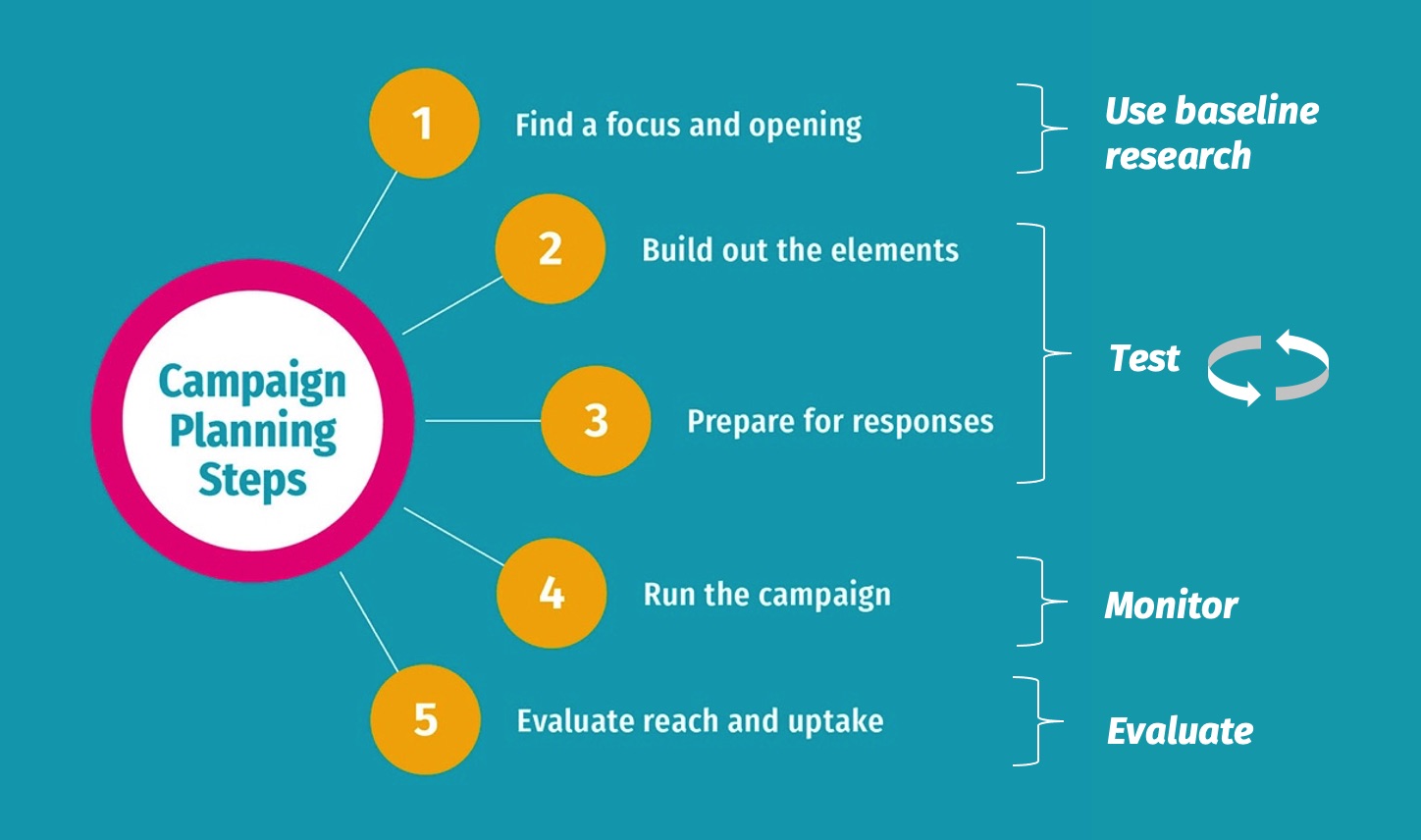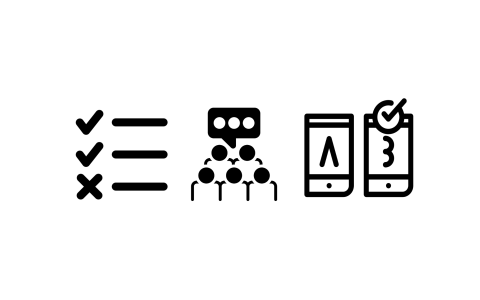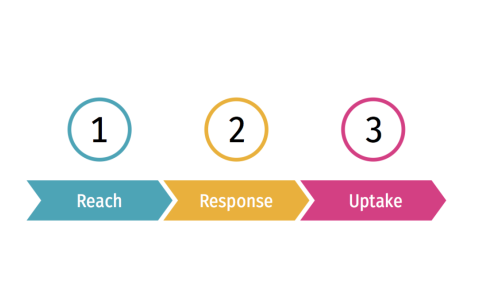Testing and evaluating strategic communications interventions
This Strategic Communications Incubator resource page pulls together tools and reflections on message testing, monitoring and evaluating narrative change work, based on years of hands-on practice supporting strategic communications practitioners.
Why is testing, monitoring and evaluating key in narrative change work?
Too often, the narrative change approach is challenged as something abstract, mysterious, unpredictable and even immeasurable. Building a solid evidence foundation throughout each step of the process is not only key to learning and effectiveness, but also important in order to address skepticism. Using robust research, testing, monitoring and evaluation methods are crucial for the development of narrative change campaigns in order to PROVE and IMPROVE:
- PROVING: It is possible to track and measure the changes narrative change practitioners set out to achieve and essential, so they know if they are making a difference or not.
- IMPROVING: With these insights, activists can improve their approach – not just for themselves but for their broader network. Improvement happens during the development of a campaign because activist campaign teams are often not the target audience, so they need to continually test their approach (a key maxim: don’t trust your instincts! ). Improvement is also essential to build future campaigns: to build on the positive outcomes and learn from mistakes.
What does it involve?

| Use baseline research | Research-based campaign ideas are initially developed, drawing on 1) audience segmentation and 2) frames maps. |
| Test | Testing then helps activists check and confirm that they are going in the right direction throughout campaign development:
|
| Monitor | Monitoring takes place once the campaign goes live to collect data on the progress and responses to the campaign rollout. |
| Evaluation | Evaluation takes place at the end, pulling together the performance data and responses and assessing to what extent the campaign targets have been met and why, as a basis for iteration and improvement. |
Resources:
A framework for evaluating narrative change campaigns

Lessons from evaluating a German narrative change campaign the moveable middle

Understand the strategic & practical choices to test your messages
See the results of a successful pilot campaign targeting the middle in Germany
